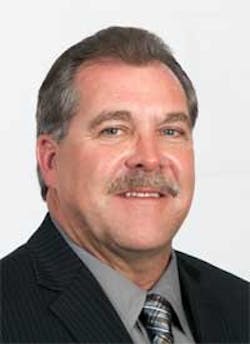Internet of Things Drives Focus on Edge Computing
Today we continue our Data Center Executive Roundtable, a quarterly feature showcasing the insights of thought leaders on the state of the data center industry, and where it is headed. In today’s discussion, our panel of experienced data center executives – James Leach of RagingWire Data Centers, Robert McClary of FORTRUST, Jack Pouchet of Emerson Network Power, Ted Behrens of Chatsworth Products, and David Shepard of BASELAYER – discusses the impact of edge computing and the Internet of Things, and how these trends are influencing how and where data centers are built and deployed.
The conversation is moderated by Rich Miller, the founder and editor of Data Center Frontier.
Data Center Frontier: Edge computing and the Internet of Things are currently two of the hottest topics in the data center industry. How might these trends impact how we build and deploy data center capacity?
ROBERT McCLARY, FORTRUST
Rob McClary: First of all, you have to separate these two trends. Edge computing is a response to the IoT. It is a distributed model that allows compute and storage capacity to be placed closer to the geographic location of the users or consumers so they can interact quicker, thereby enabling the IoT. A better question might be: why do we have to do that? It’s no secret the bandwidth infrastructure to the end users or consumers of IoT in the US is sorely lacking. It needs to be upgraded to handle the amounts of data we want to transfer from the source to the end user and the consumer at or near real time. Rightly so, edge computing is a reaction and attempt to bridge that gap.
So what happens? Edge computing causes smaller and greater numbers of data centers to be built in order to create the distributed model. You’re talking about much greater expense and a more complicated model. Wouldn’t it be better to have fewer, larger data centers and better bandwidth interlinking those data centers and the end users or consumers? It doesn’t sound like we are addressing the root cause of the problem.
In my opinion, a better path would be data centers gravitating towards the sources of energy, not towards bandwidth and or the end users or consumers. The internet will become another interstate for commerce with exit ramps that lead to the end users’ and consumers’ both at the business location and homes. Edge computing is an unfortunate detour around poor bandwidth infrastructure in order to enable the inevitable growth of the IoT and commerce. This is another example of technology outpacing infrastructure and the end user or consumer being burdened with the inconvenience.
JACK POUCHET, Emerson Network Power
Jack Pouchet: As edge and IoT applications grow, the long-term result will be an increase in the quantity and size of hyperscale data centers serving cloud and colocation applications. We will also see a corresponding increase in the number and size of networks, whether fiber for long-haul or wireless for nearby exchanges. Those developments will only occur after the edge and local exchange networks and data centers are built out.
We are already seeing the market ask for the half-rack self-contained data centers to support the edge. Pre-configured solution sales are exploding, with businesses specifying micro data centers from single rack to a complete self-contained aisle. These solutions can provide a complete infrastructure, with access control, out-of-band communications capable of monitoring workloads, utilization rates and capacity, push software / firmware updates, and security monitoring.
James Leach: Edge computing and the Internet of Things will drive the globalization of data centers. Over time you will see a global data center fabric based on a hub and spoke architecture. In this model, large wholesale data centers will be the hubs and software defined networks will be the spokes, connecting the data centers to each other, cloud providers, internet applications, and edge devices.
JAMES LEACH, RagingWire Data Centers
From a user perspective, applications are inherently global. These global applications require a global data center deployment to maximize application performance and reliability. Data center buyers don’t want to be their own general contractor to build this global data center platform. They want to work with a single colocation provider that can offer bundled pricing, a common contract, and an integrated global service model.
The impact of the emerging hub and spoke IT architecture will be to drive wholesale data center hubs in top data center markets worldwide with a flexible capacity model. Typically three to five large footprint, wholesale deployments are required around the world to maximize application reliability, minimize network latency, and leverage business continuity / disaster recovery strategies. Customers are looking for flexible capacity at these wholesale sites to support business expansion and contraction and optional resiliency configurations (2N + 2 and derivatives) mapped to the application architecture.
Lastly, in this new world of edge computing and the Internet of Everything, network interconnection becomes critical. Diverse network paths between all data centers are required to deploy an integrated data center model, and direct access to major cloud providers and internet applications is needed to enable a hybrid “Colo + Cloud” computing model.
DAVID SHEPARD, BASELAYER
David Shepard: Edge computing and the Internet of Things go hand in hand. Network latency issues occur when data has to travel a longer distance from beginning to end, so what we’re saying here is that the network has limitations. About 5.5 million new “things” are connected to the Internet every day, and when they need to travel further to talk to their connection source, it will take longer and increase traffic on the network as a whole.
Edge data centers are an excellent solution to a rapidly increasing number of connected devices. Data centers in more remote places offer a quicker connection to internet and to the world and relieve stress on the network for common tasks. With modular data center technology and DCIM tools in place, it’s much simpler to build and manage a data center in more areas of the world, outside of the mainstream data center markets.
TED BEHRENS, Chatsworth Products
Ted Behrens: The industry as a whole has gone through many iterations on how we view a “unit of scale” when deploying infrastructure over the last couple of decades. There has been a significant focus in recent years to drive centralized infrastructure in order to achieve standardization and ease system management challenges.
The growth in demand for content has outpaced the capacity of a centralized infrastructure model, particularly when you look out along the near-term growth curve. The recent trend in edge build-out really is a course correction to match up with this new curve and once again redefines the appropriate “unit of scale.”
Data Center Frontier: Recent cloud growth has increased the focus on “speed to market” – the ability to deploy data center capacity rapidly and efficiently. How would you evaluate the industry’s progress on provisioning timelines, and where do you see opportunities to improve it?
Keep pace with the fact-moving world of data centers and cloud computing by following us on Twitter and Facebook, connecting with me on LinkedIn, and signing up for our weekly newspaper using the form below:
Explore the evolving world of edge computing further through Data Center Frontier’s special report series and ongoing coverage.
About the Author








